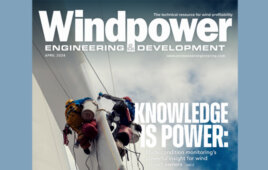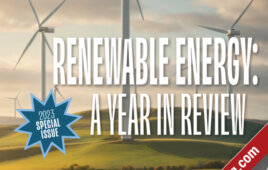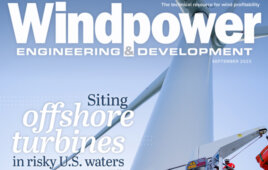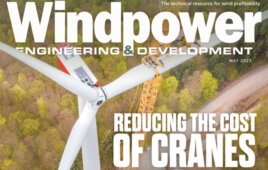The case for cleaner airports starts with renewables
SURPRISINGLY, weather was blameless when a blackout delayed more than 1,000 passengers in Hartsfield-Jackson Atlanta International Airport in December 2017. A fire — later traced to a failed switchgear — was the culprit, knocking out the airport’s electricity for some 11 hours that day. The airport’s primary and backup power cables ran through the same tunnel and the fire destroyed both, leaving many travelers (including a good friend of mine) stranded and in the dark.
This event came to mind nearly a year later when awaiting a flight at Amsterdam’s Schiphol International Airport, I read an article about The Netherlands commitment to clean energy — particularly at its airports. January 2018 marked a commitment by the country’s major airports (including Schiphol) to fully switch to wind power for electricity. According to the Royal Schiphol Group, which manages many of The Netherland hubs, local wind farms began supplying the company’s air terminals with a total of 200 gigawatt-hours of clean energy.
What’s more: new wind turbines are planned for operation in 2020 to ensure an adequate power supply and the country’s train network also runs entirely on wind, a milestone reached one year earlier than originally planned. Impressive, right?
Now imagine if North American airports routinely relied on renewable energy. A study by the National Academy of Sciences on the subject found that airports could benefit from onsite renewable sources by gaining greater control over their electrical infrastructure. For example, this means airport operations could function independently of global energy markets (a major plus for the travel industry considering airlines’ profits typically hinge on fuel prices; read more at tinyurl.com/CleanAirports). Renewables may also serve as a source of backup power (which could have served Atlanta travelers), and particularly projects with hybrid battery storage.
Certainly, a number of U.S. airports have installed solar panels (think Honolulu, Denver, Indianapolis, Tampa, and Tucson International has a unique “solar amphitheater” above its parking lots). In 2008, the Massachusetts Port Authority installed 20 wind turbines on the roof of Logan Airport’s offices, which use energy from wind along the waterfront. We can do better.
If Fortune 500 brands and a host of other non-utility entities, including cities and universities, can buy a record amount of U.S. wind power in 2018 (according to the American Wind Energy Association’s latest Market Report), then airports and transportation companies in the country are wise to follow suit. Energy comprises a large portion of operating costs at airports and wind offers low, stable prices that are an incentive to buyers. In fact, the cost of wind has fallen by 69% since 2009, falling another 7% in 2018, according to investment firm Lazard.
America is currently looking to the UK and Europe for lessons learn in offshore wind (see the article on page 26). Perhaps it should also look to The Netherlands for inspiration relating to renewables and travel and transportation.
Speaking of clean-energy leaders, check out the companies our readers voted for as the frontrunners in wind leadership on page 36. Kudos to those wind and renewable workers and advocates diligently working toward a cleaner, more sustainable world.
Michelle Froese
Editor
mfroese@wtwhmedia.com
@forenwables
Filed Under: Digital issues




